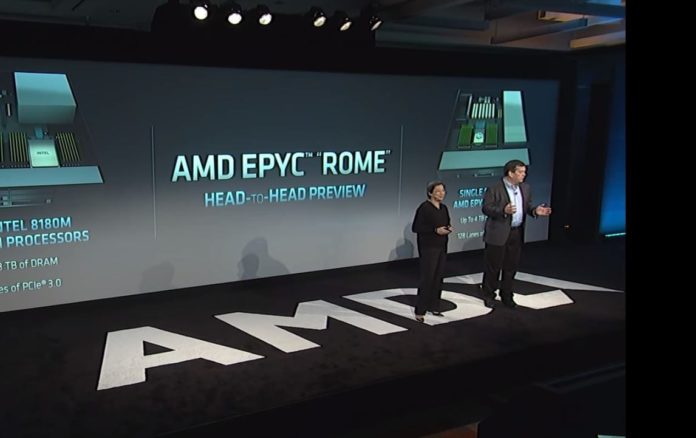Here’s good news for AMD. The uptick in Zen 2 core sales hasn’t just been in the relatively low-volume CPU space. We’ve been hearing a lot of news of late about AMD dominating the consumer CPU market with the Ryzen 3000 series. However, this was never a big problem for Intel (and never that great a victory for AMD shareholders either), because the consumer market represents only a fraction of the overall volume of CPUs sold. You as a consumer will probably never see an Intel Xeon CPU unit in your life. But Intel sells way more Xeons to B2B customers than it does Core

That looks set to change with AMD EPYC making major headway. When EPYC first came out, AMD had secured…close to 0 percent of the CPU server market. In ye old days of early 2017, Nvidia’s GPGPU push looked to be a much greater existential threat to Intel than Team Red. Fast forward to today and the situation couldn’t be more different. Ryzen’s IPC gains and the chiplet based design AMD employs means that they offer server customers more performance, and more cores, for a cheaper cost.
A Digitimes report indicates that by 2020, EPYC may take as much as a 10 percent share in the market. Considering that AMD started from literally nothing, 10 percent is just fine.
This has implications for gamers, too. While we might think that AMD’s bottom line is being propped up by consumer CPU sales, Team Red’s real growth will only come from volume sales in the server market. An AMD that’s financially sound will be able to spend more on R&D. That’ll mean better CPUs and GPUs for everyone.

AMD has a packed server portfolio lined up in the server market with Rome, followed by Milan and Genda based on the Zen 3 and Zen 4 designs, respectively, These two micro-architecture updates will be major ones like the recent Zen 2. Milan is expected to exploit a more mature form of the 7nm node with higher frequencies and lower clocks while Genda will most likely leverage the newer 5nm node from TSMC. If rumors are anything to go by, Zen 3 and Zen 4 will feature a new improved form of SMT with each core supporting 4 simultaneous threads. We’ll keep you updated as we hear more about AMD’s upcoming products.


